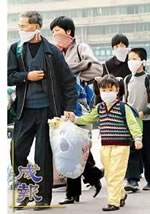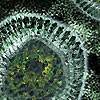If not NOW, when?
It sounds like a silly question, but there are events in our lives we know are going to happen, but they seem so far away it's hard to take them too seriously. Saving for a rainy day. Making a will. Yearly dental and medical appointments. Investing in life insurance.
We're all the same. "It's a good idea, but...." "Oh, yeah, I'll do that later, just after...." We say these things to ourselves, especially when the task requires some of our time or some of our money.
Making a home preparedness kit for a disaster or a pandemic situation is one we also tend to settle comfortably into the "One Of These Days," category, and then forget about it.
A likely trigger to motivate this preparation may very well be the first human-to-human transmission (H2H)of the H5N1 virus. This is when the influenza virus that is killing birds worldwide has adapted itself enough to become easily transmissible to humans, not just through contact with birds, but from other humans. Up until now, if you weren't a bird farmer, or lived in the far East, the idea of catching the bird flu seemed very remote indeed, despite what scientists have encouraged us to prepare for.
This week, the World Health Organization has confirmed a small number of H5N1 influenza in humans occurring as a result of human to human infection. In China and in Pakistan there have been isolated incidents and reported deaths.
The cases of suspected H2H transmission have been limited to blood relatives. 91 other, non-related, people coming into contact with the 24 year old man in China, who died, and his 52 year-old father who contracted the disease from his son and survived, have all remained free of infection. Scientists who have examined the particular virus in this incident are saying it shows no indication of an H2H mutation. They believe there are still several barriers the virus must overcome before it acquires easy human transmissability.
Until a vaccine is developed for the particular strain of influenza the virus will eventually mutate to, prevention is still more effective than cure. Prevention will require preparation. Washing hands frequently, observing cough and sneeze etiquette, and maintaining social distancing, and keeping your immune system healthy are still the best proactive measures.
The time and money to stock supplies to "shelter at home," to reduce your exposure in public places where contamination will take place, can take place over time. The effort and added cost to assembling 2 - 4 weeks of food and supplies can be spread out. No one can foresee when the window of time to prepare will close, but the fact that human-to-human transmission has begun, however limited, adds to the credibility of what scientists have been telling us.
If you are not going to begin these preparations now, then when? What other time seems more likely. If you're waiting for a signal, these first H2H transfers are as good as any.
Thursday, April 10, 2008
Subscribe to:
Post Comments (Atom)







No comments:
Post a Comment